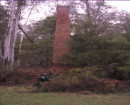BARMAH PUNT
JACK EDWARDS PARK, MURRAY STREET BARMAH, MOIRA SHIRE
-
Add to tour
You must log in to do that.
-
Share
-
Shortlist place
You must log in to do that.
- Download report


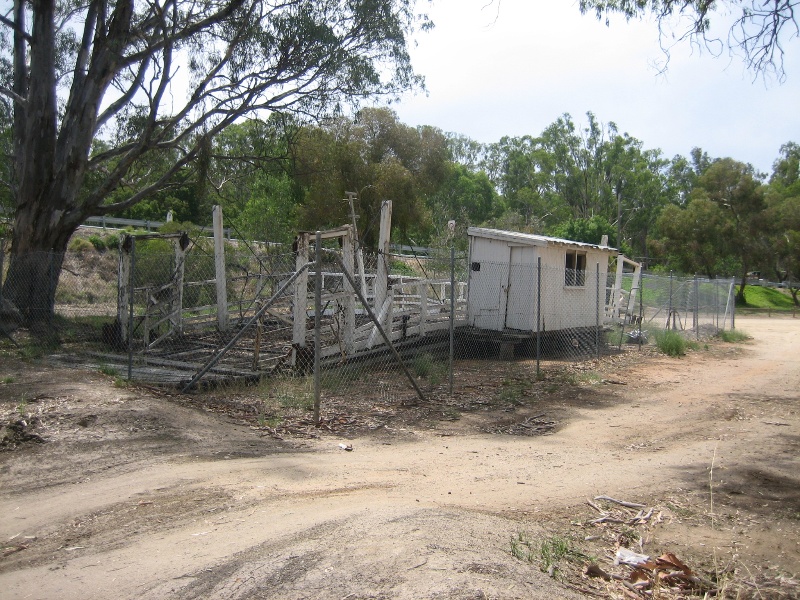
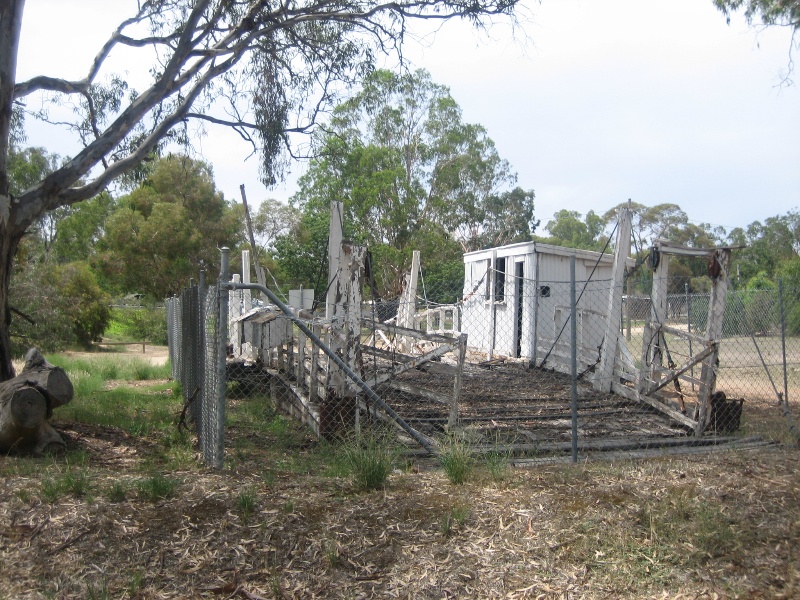


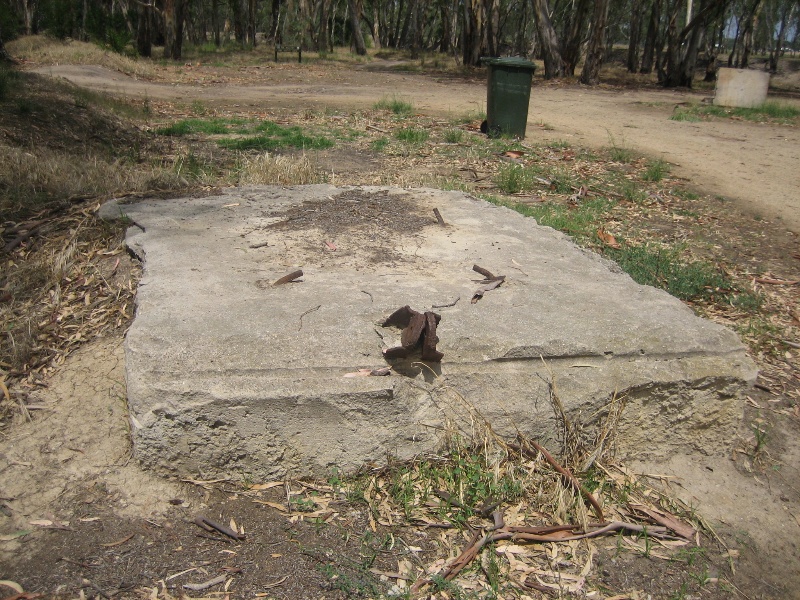
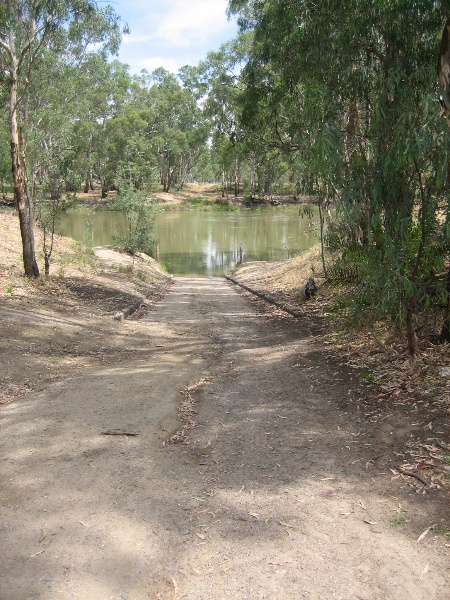
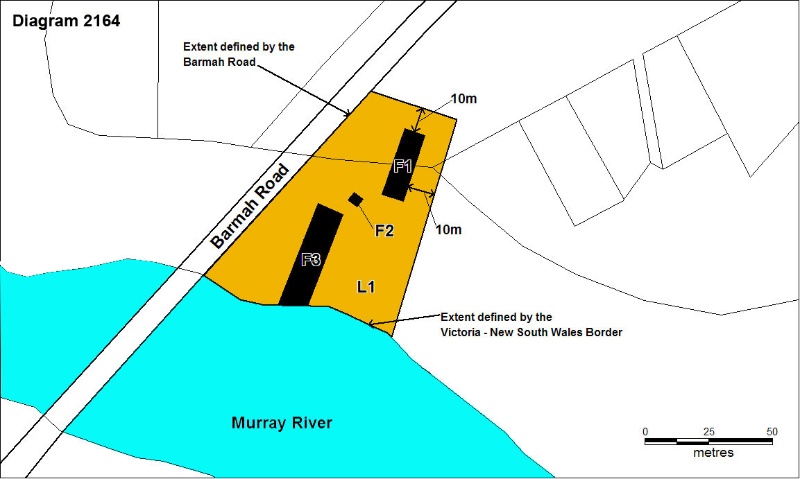



Statement of Significance
The Barmah Punt operated as a ferry crossing over the Murray River between 1929 and 1966. The Punt is no longer in use and is now located on the Victorian bank of the river next to the road approach to the crossing.
The punt was built in 1929 by the New South Wales Department of Main Roads in Euston (NSW) and was towed by steamer to Barmah to replace an earlier punt operated by William Maloney.
The Murray River at Barmah was easily forded in dry weather and became a recognised crossing point with a ferry in operation prior to the town of Barmah being surveyed in May 1866. The crossing gave the impetus for Barmah to develop as a loading place for wool from neighbouring sheep stations and as a small boat centre.
The original punt was replaced in 1870 when James Maloney, who had previously operated the Campaspe Punt, gained the licence operate the ferry at the crossing. Maloney's Punt is believed to have been able carry 40 tons and was propelled by a revolving drum on steel cables. It is believed to have had an engine house and engine added in 1922.
The ferry operation remained with the Maloney family until 1929 when it was taken over by the New South Wales Department of Main Roads. The current punt operated from 1929 until 1966 when the ferry crossing became redundant with the construction of a bridge.
The Barmah Punt is a timber structure consisting of a pontoon base with an attached engine house counterweighted by timber box filled with concrete. The pontoon has a high whale-back form and is constructed of thick hardwood longitudinal planks over hardwood timber joists. The pontoon structure is braced and stiffened by steel cables over high timber posts. The side rails are constructed of timber post and rail. Timber gates are located at each end of the deck and were closed to secure the ends of the punt during crossing.
The punt ran along a guide cable on the upstream side and a drive cable on the downstream side. The cables were anchored to each bank. The concrete base of the drive side anchor point is still visible on the Victorian bank.
The understanding of the punt is enhanced by its setting. In addition to the anchor point, both the approaches to the crossings on each bank are clearly visible and the Victorian approach remains in use as a boat ramp.
How is it Significant?
The Barmah Punt is of historical significance to the State of Victoria
Why is it Significant?
The Barmah Punt is of historical significance as the earliest remnant example of a cable punt ferry crossing over the Murray River. Punt ferries were once the most common form of deep river crossing in the colonies. Important crossings became the location of settlements and most eventually were replaced with bridges. Two local ferry crossings remain on the Murray River between New South Wales and Victoria but both of these use punts of later construction.
The Barmah Punt is of historical significance for its role in facilitating intercolonial trade and communication between New South Wales and Victoria.
The Barmah Punt is of historical significance as an intact example of an early motorised timber cable punt. Early cable punts were operated by hand, with the introduction of motors only occurring in the early twentieth century. These early motorised punts maintained the form of the early hand operated punts. The Barmah Punt is of this type and illustrates both the form of punts that regularly crossed the colony's rivers in the nineteenth century and their later developments. The setting of the punt with its extant anchor point and road approach provides the context to fully appreciate to operation of such a ferry crossing.
-
-
BARMAH PUNT - History
Crossing places on rivers became the focus of activity in the area attracting trade and often stores and hotels. These crossing points often developed into settlements. Prior to the construction of bridge ferries were the main form of crossing deep stretches of water. These ferries were generally in the form of a cable punt. Punts had the disadvantage of being a slow method of crossing a river and only had limited carrying capacity. Drovers were often reluctant to use them as it was believed that the stock could be harmed through crushing on the punt. In response to the need for efficient and economical river crossings, the major ferry crossings were replaced with bridges, which were generally located adjacent to the ferry crossing. Those areas which weren't on major routes or which only served local communities were slow in attracting the construction of a bridge.
There are only two remaining ferry crossings over the Murray River between Victoria and New South Wales, at Speewa and at Wymah, although there are ten ferry crossings over the Murray in South Australia. This discrepancy may be a consequence of the amount of trade between New South Wales and Victoria where stock and produce from New South Wales were sent across the Murray to access Victoria railways which allowed cheap efficient access to Victorian markets.
The Murray River at Barmah was easily forded in dry weather and became a recognised crossing point with a ferry was in operation when the Town of Barmah was surveyed in May 1866. The focus of the crossing allowed Barmah to develop as a loading place for wool from neighbouring sheep stations and as a small boat centre.
The original punt was replaced in 1870 when James Maloney, who had previously worked on the Campaspe Punt, gained the licence operate a punt over the crossing. Maloney's Punt is believed to have been able carry 40 tons and propelled by a revolving drum on steel cables. It is believed to have had an engine house and engine added in 1922.
The operation of the punt remained with the Maloney family until 1929 the operation of the crossing was taken over by the New South Wales Department of Main Roads. The punt was built in Euston (on the NSW side of the Murray from Robinvale) and towed upstream by steamer. The punt is understood to have been out of action for period of time in the 1940's due to a polio epidemic when movement in and out of the area was restricted and patrolled by police.
Tenders were called for the new bridge in 1964 and the punt became redundant with construction of the bridge in 1966. The punt is now located on the Victorian bank next to the road ramp to the crossing.
Barmah is located at one end of a pocket of land created by a long bend in the Murray River, it is not located on any major stock routes and is close to a number of major river crossing points such as Echuca, Cobram and the rail crossing between Numurkah and Tocumwal. The majority of traffic using the crossing was local and after the establishment of the railways the importance of landings became less important for the river trade. This resulted in the delay in Barmah's ferry being replaced by a bridge. The bridge, when it was built, was more in response to pressure from local interests, whose nearest major centre of Echuca, was most easily accessed by crossing the river and travelling a shorter distance to Echuca/Moama trough New South Wales rather than travel the longer distance along the Murray Valley highway through Victoria.
BARMAH PUNT - Plaque Citation
The third vessel to service this crossing since the 1860s, this punt operated from 1929 until 1966. It is the oldest remaining example of a cable punt ferry crossing over the Murray River.
BARMAH PUNT - Permit Exemptions
General Exemptions:General exemptions apply to all places and objects included in the Victorian Heritage Register (VHR). General exemptions have been designed to allow everyday activities, maintenance and changes to your property, which don’t harm its cultural heritage significance, to proceed without the need to obtain approvals under the Heritage Act 2017.Places of worship: In some circumstances, you can alter a place of worship to accommodate religious practices without a permit, but you must notify the Executive Director of Heritage Victoria before you start the works or activities at least 20 business days before the works or activities are to commence.Subdivision/consolidation: Permit exemptions exist for some subdivisions and consolidations. If the subdivision or consolidation is in accordance with a planning permit granted under Part 4 of the Planning and Environment Act 1987 and the application for the planning permit was referred to the Executive Director of Heritage Victoria as a determining referral authority, a permit is not required.Specific exemptions may also apply to your registered place or object. If applicable, these are listed below. Specific exemptions are tailored to the conservation and management needs of an individual registered place or object and set out works and activities that are exempt from the requirements of a permit. Specific exemptions prevail if they conflict with general exemptions. Find out more about heritage permit exemptions here.Specific Exemptions:General Conditions: 1.
All exempted alterations are to be planned and carried out in a manner which prevents damage to the fabric of the registered place or object. General Conditions: 2.
Should it become apparent during further inspection or the carrying out of works that original or previously hidden or inaccessible details of the place or object are revealed which relate to the significance of the place or object, then the exemption covering such works shall cease and Heritage Victoria shall be notified as soon as possible. Note: All archaeological places have the potential to contain significant sub-surface artefacts and other remains. In most cases it will be necessary to obtain approval from the Executive Director, Heritage Victoria before the undertaking any works that have a significant sub-surface component. General Conditions: 3.
If there is a conservation policy and plan endorsed by the Executive Director, all works shall be in accordance with it. Note: The existence of a Conservation Management Plan or a Heritage Action Plan endorsed by the Executive Director, Heritage Victoria provides guidance for the management of the heritage values associated with the site. It may not be necessary to obtain a heritage permit for certain works specified in the management plan. General Conditions: 4.
Nothing in this declaration prevents the Executive Director from amending or rescinding all or any of the permit exemptions. General Conditions: 5.
Nothing in this declaration exempts owners or their agents from the responsibility to seek relevant planning or building permits from the responsible authorities where applicable.Non Registered Fabric:
All works including demolition and internal modification to structures not included in the extent of registration are permit exempt. Additions to structures not included on the extent will require either the approval of the Executive Director or permit approval. Should these works require a permit is at the discretion of the Executive Director.The construction of any new structures within the boundaries of this registration will require a permit.
Landscape:
The process of gardening and maintenance, mowing, hedge clipping, bedding displays, removal of dead plants, disease and weed control, emergency and safety works to care for existing plants and planting themes.Removal of vegetation that is not significant to maintain fire safety to protect monuments, paths, significant buildings and structures.
The replanting of plant species to conserve the landscape character and plant collections and themes.
Repairs, conservation and maintenance to hard landscape elements, buildings, structures, ornaments, roads and paths, drainage and irrigation system.
Management of trees in accordance with Australian Standard; Pruning of amenity trees AS4373.
Removal of plants listed as noxious weeds in the Catchment and Land Protection Act 1994.
Installation, removal or replacement of garden watering and drainage systems.
Non-structural works that occur at a distance greater than 5 metres from the canopy edge of a significant tree, plant or hedge, (structural works may require a permit if still on the registered land).
Non-commercial signage, lighting, security fire safety and other safety requirements, provided no structural building occurs.
Plant labelling and interpretative signage.
Resurfacing of existing paths and driveways.
Maintenance of roads and paths and gutters to retain their existing layout.
Public Safety and Security :
The following public safety and security activities are permit exempt under section 66 of the Heritage Act 1995,a) public safety and security activities provided the works do not involve the removal or destruction of any significant above-ground structures or sub-surface archaeological artefacts or deposits;
b) the erection of temporary security fencing, scaffolding, hoardings or surveillance systems to prevent unauthorised access or secure public safety which will not adversely affect significant fabric of the place including archaeological features;
c) development including emergency stabilisation necessary to secure safety where a site feature has been irreparably damaged or destabilised and represents a safety risk to its users or the public.
Note: Urgent or emergency site works are to be undertaken by an appropriately qualified specialist such as a structural engineer, or other heritage professional.
Signage and Site Interpretation :
The following Signage and Site Interpretation activities are permit exempt under section 66 of the Heritage Act 1995,a) signage and site interpretation activities provided the works do not involve the removal or destruction of any significant above-ground structures or sub-surface archaeological artefacts or deposits;
b) the erection of non-illuminated signage for the purpose of ensuring public safety or to assist in the interpretation of the heritage significance of the place or object and which will not adversely affect significant fabric including landscape or archaeological features of the place or obstruct significant views of and from heritage values or items;
c) signage and site interpretation products must be located and be of a suitable size so as not to obscure or damage significant fabric of the place;
d) signage and site interpretation products must be able to be later removed without causing damage to the significant fabric of the place;
Note: The development of signage and site interpretation products must be consistent in the use of format, text, logos, themes and other display materials.
Note: Where possible, the signage and interpretation material should be consistent with other schemes developed on similar or associated sites. It may be necessary to consult with land managers and other stakeholders concerning existing schemes and strategies for signage and site interpretation.
Minor Works :
Note:
Any Minor Works that in the opinion of the Executive Director will not adversely affect the heritage significance of the place may be exempt from the permit requirements of the Heritage Act. A person proposing to undertake minor works may submit a proposal to the Executive Director. If the Executive Director is satisfied that the proposed works will not adversely affect the heritage values of the site, the applicant may be exempted from the requirement to obtain a heritage permit. If an applicant is uncertain whether a heritage permit is required, it is recommended that the permits co-ordinator be contacted.Regular Site Maintenance :
The following site maintenance works are permit exempt under section 66 of the Heritage Act 1995,a) regular site maintenance provided the works do not involve the removal or destruction of any significant above-ground features or sub-surface archaeological artefacts or deposits;
b) the maintenance of an item to retain its conditions or operation without the removal of or damage to the existing fabric or the introduction of new materials;
c) cleaning including the removal of surface deposits, organic growths, or graffiti by the use of low pressure water and natural detergents and mild brushing and scrubbing; d) repairs, conservation and maintenance to plaques, memorials, roads and paths, fences and gates and drainage and irrigation.
e) the replacement of existing services such as cabling, plumbing, wiring and fire services that uses existing routes, conduits or voids, and does not involve damage to or the removal of significant fabric.
Note: Surface patina which has developed on the fabric may be an important part of the item's significance and if so needs to be preserved during maintenance and cleaning.
Note: Any new materials used for repair must not exacerbate the decay of existing fabric due to chemical incompatibility, obscure existing fabric or limit access to existing fabric for future maintenance. Repair must maximise protection and retention of fabric and include the conservation of existing details or elements.
Fire Suppression Duties :
The following fire suppression duties are permit exempt under section 66 of the Heritage Act 1995,a) Fire suppression and fire fighting duties provided the works do not involve the removal or destruction of any significant above-ground features or sub-surface archaeological artefacts or deposits;
b) Fire suppression activities such as fuel reduction burns, and fire control line construction, provided all significant historical and archaeological features are appropriately recognised and protected;
Note: Fire management authorities should be aware of the location, extent and significance of historical and archaeological places when developing fire suppression and fire fighting strategies. The importance of places listed in the Heritage Register must be considered when strategies for fire suppression and management are being developed.
Weed and Vermin Control :
The following weed and vermin control activities are permit exempt under section 66 of the Heritage Act 1995,a) Weed and vermin control activities provided the works do not involve the removal or destruction of any significant above-ground features or sub-surface archaeological artefacts or deposits;
Note: Particular care must be taken with weed and vermin control works where such activities may have a detrimental affect on the significant fabric of a place. Such works may include the removal of ivy, moss or lichen from an historic structure or feature, or the removal of burrows from a site that has archaeological values.
Painting
Painting will not require permit approval if the painting:
a) does not involve the disturbance or removal of earlier paint layers or other decorative schemes, where the extant painting or other decorative scheme has not been mentioned in the statement of significance or the extent of registration.
b) involves over-coating with an appropriate surface as an isolating layer to provide a means of protection for significant earlier layers or to provide a stable basis for repainting;
c) employs the same colour scheme and paint type as an earlier scheme if they are appropriate to the substrate and do not endanger the survival of earlier paint layers.
BARMAH PUNT - Permit Exemption Policy
The purpose of the Permit Policy is as a guide only in assisting when considering or making decisions regarding works to the place. It is recommended that any proposed works be discussed with an officer of Heritage Victoria prior to them being undertaken or a permit is applied for.
The purpose of the permit exemptions is to allow works that do not impact on the heritage significance of the place to occur without the need for a permit. Works other than those mentioned in the permit exemptions may be possible but will require either the written approval of the Executive Director or permit approval.
It is important that any proposed changes to the place are considered and assessed on the basis of clearly defined plans and proposals and must be planned and carried out in a manner which prevents damage to the significant fabric of the registered place. It is recommended that before any proposed changes are undertaken a Conservation Management Plan, be developed for the object and the site to better guide future works.
-
-
-
-
-
Eucalyptus camaldulensis
 National Trust
National Trust -
Eucalyptus camaldulensis
 National Trust
National Trust -
Eucalyptus camaldulensis
 National Trust
National Trust
-
'YARROLA'
 Boroondara City
Boroondara City -
1 Bradford Avenue
 Boroondara City
Boroondara City
-
-





